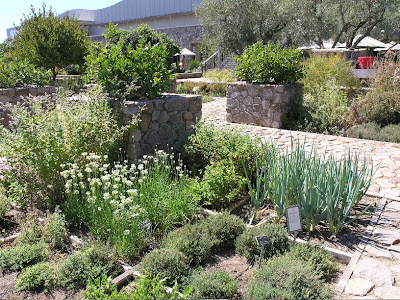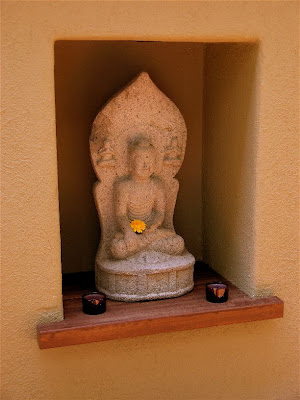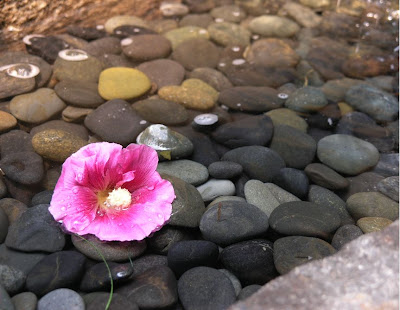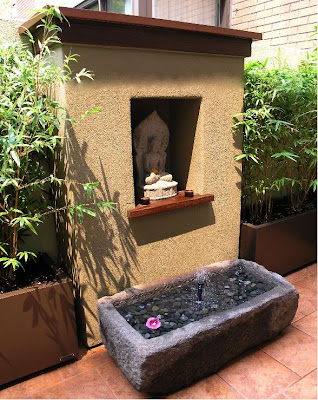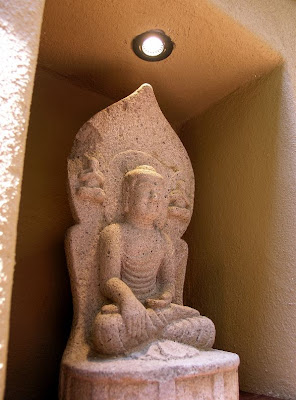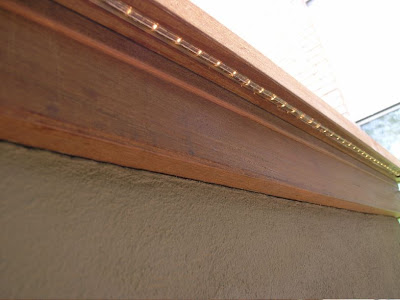Edible Landscapes
Planting an edible landscape is nothing new, it’s been done and done extremely well since the Medieval times.
One of the most beautiful representations of a Medieval vegetable garden was laid out in the 1930’s at The Cloisters in New York City.
Viewing this garden is a great education in understanding how good structural bones can aesthetically and functionally carry a garden through decades and still look as good as the first day that it was planted.
Good landscape architectural bones defines space.
When you think of planting out your vegetable garden it is essentially a garden made up of temporary annuals. When those annuals are gone, you are left with fallow ground.
To anchor your annual garden it makes functional sense to include some structural definition.
Structural definition can be as simple as paths, hedges, arbors and walls of various heights that can be sculpted out of espaliered plants or construction materials ( stone, wood,
metal ).
Below are a few photographs of some sensible edible gardens.
These first two photos show a simple edible estate.
The first photo depicts a garden of Olives, espalier figs, cascading rosemary, lemons and silver ground cover thyme.
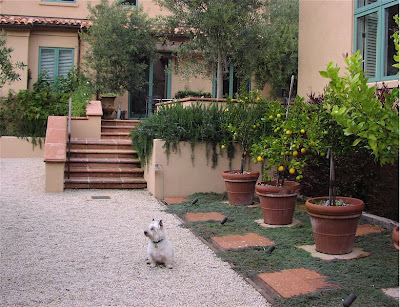
This photo of the same property shows a raised vegetable garden specifically designed for a physically challenged ( a broken back ) gardener.
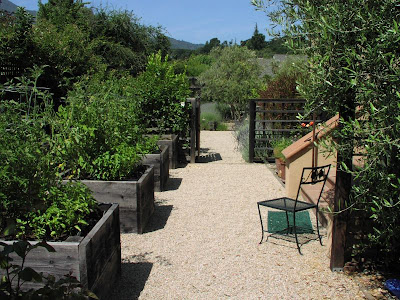
This old photograph was taken in the late 1980’s before I had digital camerea technology. ( apologies for the photographic quality)
We designed and planted this back yard potager. It’s outer frame structure is defined by clipped dwarf boxwood, variegate myrtle and rosemary topiary forms.
The back green wall is a connecting series of espalier apple trees. This garden provides food all year round for a family of 4.
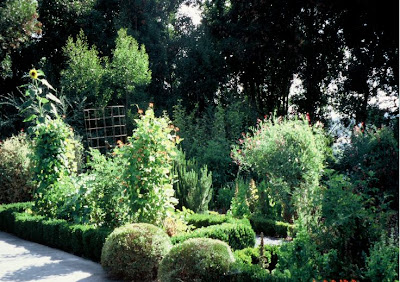
In the 90’s we remoldeled a mid century modernist home. This is one of the raise stone vegetable/ herb/ flowers beds. Hand cut New England bluestone.

My vegetable / potager garden resides in my front yard.
Because of its front and center location I wanted it to look good all year round so I planned and planted good evergreen bones.
I’m glad that I had the foresight to do this because last year due to medical surgery I was not able to plant any annual vegetables.
It’s depressing enough to deal with failing health so the last thing you want to do is walk into your front yard and see a lifeless fallow garden. That’s not too healing.
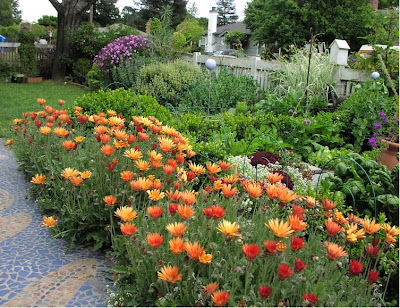
This photo shows the front yard edible garden in its first winter - note the simple wire fence to help train the Jack Russell terrior from foraging in the garden
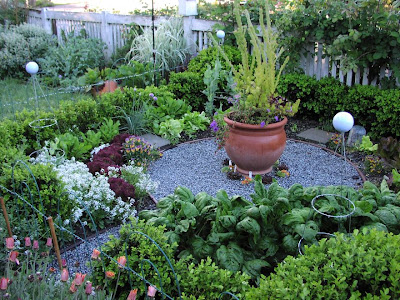
This picture shows the garden a couple of years later. The boxwood frame is taking shape and the Jack Russell terrior has trained me that he is going to go anywhere he wants in the garden. - gone is the simple barrier fence. He has me trained.

The garden in the late winter - lots of lettuce, peas, chives, and other winter vegs.
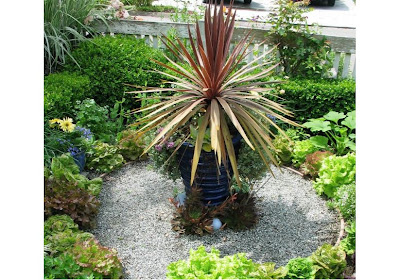
I took this photo July 3, 2008, the bones of the front yard vegetable garden are grown in and now it just takes a trimming twice a year to keep it in shape.
This summer I have tomatoes, squash, peppers, chives, sage, oregano, many types of basil and some medicinal herbs growing.
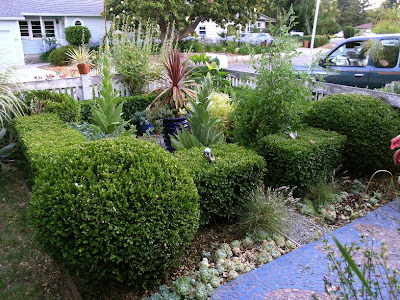
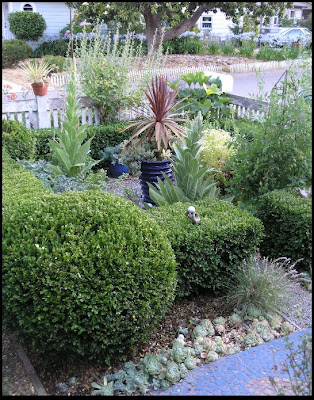
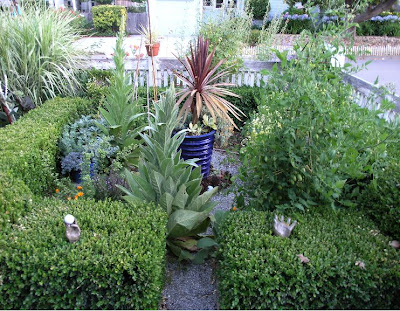
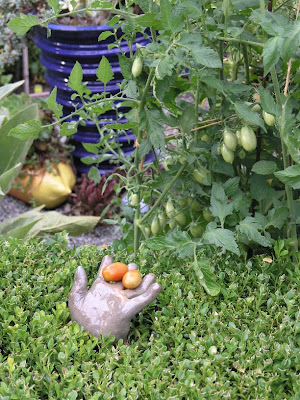
Not too far from my house is the Copia Institute in Napa Valley.
I am crazy over the front yard vegetable garden that Peter Walker designed.
He has said that Villandry in France was one source of inspiration for him when he tackled this design.
Mr. Walker utilizes stone walls, decomposed granit paths, arbors and strong axial vista ways to ground his potager garden to the architecture and surrounding environment.
His planting scheme is spectacular.
